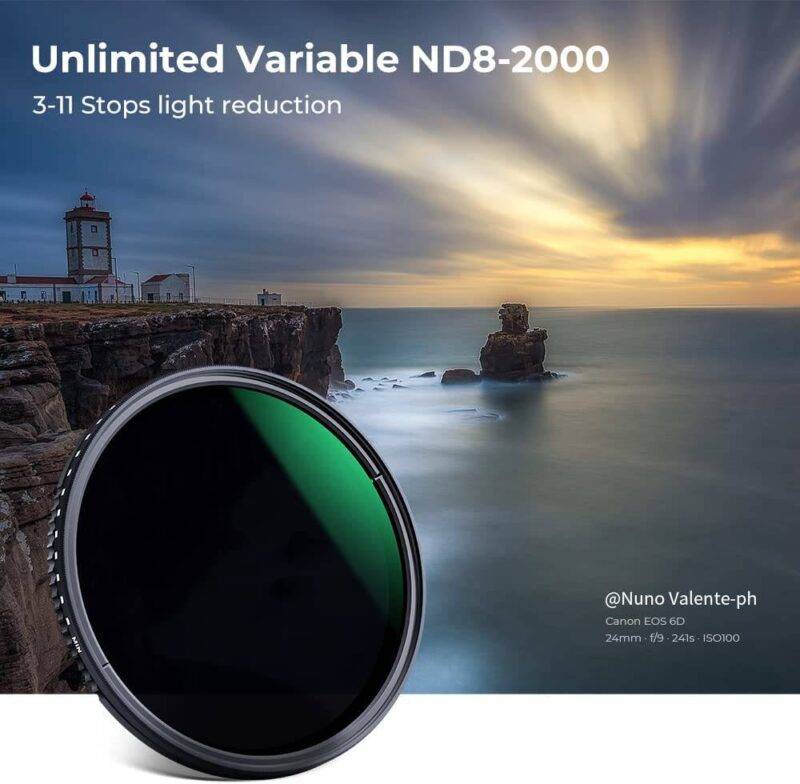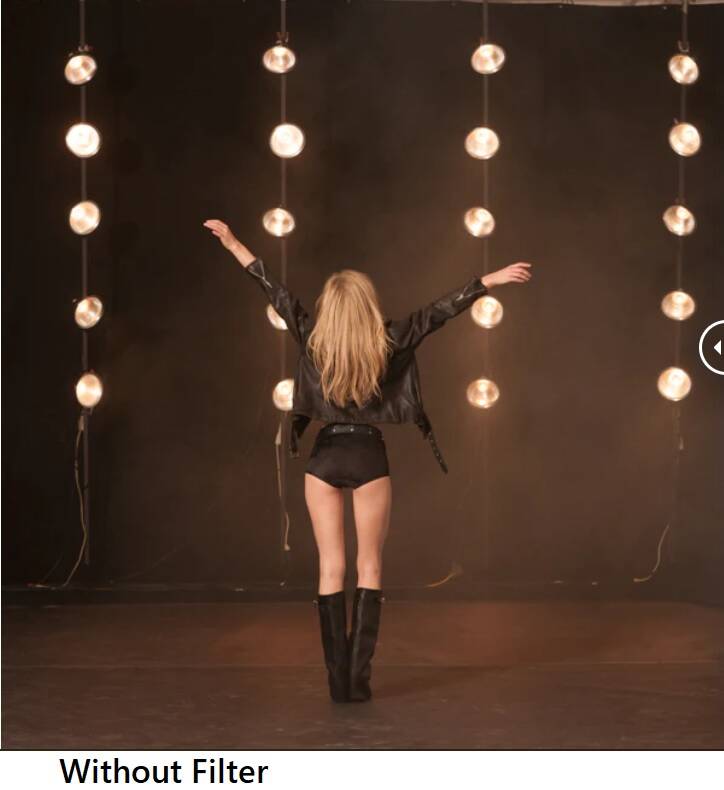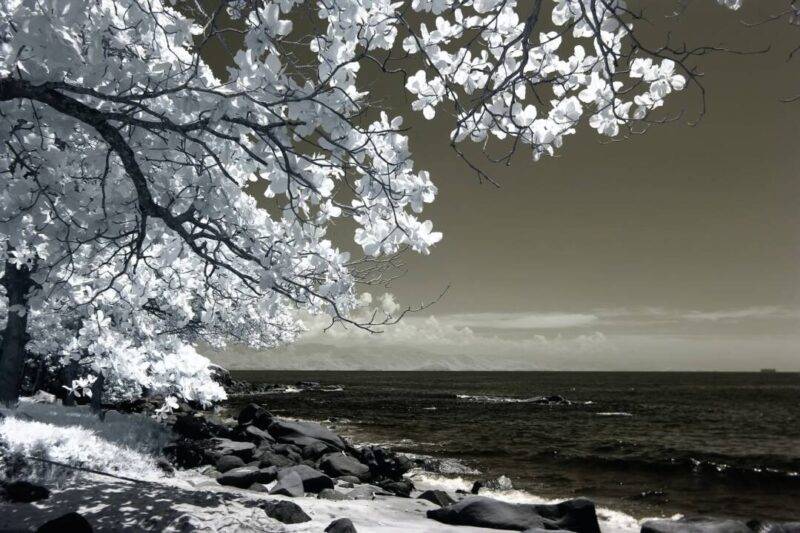Last Updated on July 10, 2022 by PixelPluck
The art of photography is different from taking snapshots. It includes a creative thought process. Photographers often rely on various types of photography gears to get the best result out of different situations. Apart from the lens and the camera body, some accessories help enhance the photograph. One of the popular photography accessories is a lens filter or the filters for lenses. In this detailed article, you will learn about different types of filters, their use, and which one to buy. Read a detailed guide to Lens Filters in Photography.
What are Stops of Light in Photography?
Before we go into detail about the lens filters, let us learn about ‘stops’ in light. A ‘stop’ in light is double the light or half the light. So one-stop open will add double the light to the photograph and a one-stop reduction will cut the available light by half. ‘Stop’ term is popularly used by photographers to adjust the available amount of light to a balanced level. A bigger ‘Stop’ range means a better dynamic range. Human eyes have an incredible 15 stops of dynamic range. In comparison, most modern cameras can only record up to 6 stops of light.
Contents
Introduction to Lens Filters
Lens filters are external attachments on the front of the lens to enhance or manipulate the light entering the lens. Lens Filters easily attach to the camera’s lens using the threads at the front of the lens. The lens filters often have special films applied to them to get a certain effect. The materials used in the manufacture of professional lens filters are of the highest quality and precision. External Lens Filters are most popular among landscape photographers.
Lens filters come in various shapes and fittings. Most lens filters are circular and directly attach to the lens thread. Some professional lens filters are square or rectangular and come with their filter mount and bracket.
Don’t confuse digital filters with physical filters. The filters that you use today on social media apps like Instagram and others are digital filters. The idea of digital filters originated from physical filters that are used on cameras.
Types of Lens Filters in Photography
A filter is classified based on its purpose in photography. Broadly, there are 10 Different types of Lens Filters. These are:
- UV Filter
- Polarizing Filter
- ND Filter
- Graduated ND Filter
- Variable ND Filter
- Color Filter
- Close-up Macro Filter
- Special effects Filter
- Infrared Filter
- Diffusion Filter
UV Filter
Ultra-violet Filter is called UV Filter. The UV filter is one of the most common filters used by photographers on their lenses. In film camera days, ultraviolet light entering the lens destroyed the negative film inside the camera. Modern cameras have electronic sensors, so a UV filter is not required. It does, however, protect the front optical element from bumps and scratches. Furthermore, it is among the cheapest of the lens filters. This makes it ideal for new photographers who want to protect their expensive lenses. A UV filter will not affect the final photograph.
Check UV Filters: Basic UV Filter
Polarizing Filter
Polarising filters enhance the photograph by adding more depth and saturation in colors. They also reduce reflections and get a clearer photo. The polarizing filters come with a rotating mount. Once you attach it to the lens, you can rotate it to reduce the reflections. It acts by polarizing the light rays. Polarizing filters are not suitable for extremely wide-angle lenses as they may create an uneven blue color in the sky.
ND Filter
ND Filter denotes the Neutral Density filters. They reduce the amount of light entering the lens. Neutral Density filters are usually tinted dark in color. The darkness depends upon the number that is present on the ND filter. A higher number denotes a darker ND filter. It ranges from ND2, ND4 to ND10, and so on. For every stop of the ND filter, you halve the amount of light entering the camera. You can also stack two ND filters to get a more prolonged exposure. For example, ND2 and ND4 filters stacked together will make an ND6.
This can be helpful in two ways. You can either slow down the shutter speed or let you open up the aperture. Here is an ND chart that will help you understand the new shutter speed when you use a specific ND filter.
| Shutter Speed without Filter | ND Filter Stops | New Shutter Speed |
|---|---|---|
| 1s | 0 | 1s |
| 1s | 1 | 2s |
| 1s | 2 | 4s |
| 1s | 3 | 8s |
| 1s | 4 | 15s |
| 1s | 5 | 30s |
| 1s | 6 | 1m |
| 1s | 7 | 2m |
| 1s | 8 | 4m |
| 1s | 9 | 8m |
| 1s | 10 | 16m |
| 1s | 11 | 30m |
| 1s | 12 | 1hr |
Graduated ND Filter
Graduated ND filters are just like Neutral Density filters except they have a gradual increase in darkness on the filter. One-half of the filter is darker than the other. This means that the top of the filter will be darker than the bottom side or vice versa. Of course, you can rotate the filter to bring the darker side at the bottom or top of the frame while composing the photograph.
Graduated ND filters are typically used when the sky is overexposed. It corrects the exposure corresponding to the subject below the horizon thus creating a better dynamic range in the photograph. The graduation may be warm or cool in color adding additional tonal range in the sky.
Graduated filters are also called ‘grads’ and come as either Hard Grads or Soft Grads. A ‘hard grad filter’ transitions from darker to lighter over a tiny area. It’s good if the change in exposure is straight and clearly defined, as in a horizon. In contrast, a ‘soft grad filter’ spreads the change over a wider area, which is good when you don’t have a clearly defined edge.
Graduated Neutral Density filters are also called Sunset and Sunrise Filters as they are often used for landscape photography during sunrise and sunset.
Variable ND Filter
A variable ND filter is the most popular ND filter for beginners as it offers multiple stops of ND settings in one filter. You need to rotate the ring to change the ND value. This makes it easier to use and adjust faster than a fixed ND filter. The results are however a fraction less sharp than fixed ND filters. So unless you are professional, the variable ND filter will save you a lot of money and expand your ND range without breaking your budget. A variable ND filter also acts as a polarizer.
It is better to get a variable ND filter as you can use the complete range on a single ND filter. Rotating the filter thread changes the ND value.
Check out the most popular variable ND filters: K&F Variable ND Filter,

Color Filter
Color filters impart a specific hue to the resulting photograph. Using a color filter is the classical way of doing it, although it’s easier in post-processing. Color filters are usually of one single color. The most popular color filters are red, yellow, and orange. They are selectively used to get a darker blue sky or an intensely colorful sunset.
Close-up Macro Filter
Macro lenses are expensive for the average hobbyist photographer. The close-up macro filter is a popular and inexpensive alternative to dedicated macro lenses. You will not get a professional quality out of the close-up macro filter but they do a decent job for the price. Close-up macro filters are magnifying lens which is added to the front element of the kit lens or any other suitable lens. They produce a magnified image of the subject onto the front optics of the lens. As you can see in the magnified image, it contains greater detail than would have been visible from a bare lens.
Special effects Filter
Special effects filters, as their name suggests, are used for special scenes that require creative perspectives. For example, starburst filters are used to create starry effects coming from incoming light sources. This is very useful for concert photographers. It adds interest to an otherwise bland image. Other examples include dense-fog filters and night-light filters.


Infrared Filter
Infrared filters are some of the oldest filters and is in use since film photography days. They block or reflect the infrared light from the visible spectrum of light and only let the visible light get onto the camera sensor. This creates a very otherworldly perspective that may look ghostly. There is a sense of appeal to minimalist and fine art photographers for the infrared filter.

Diffusion Filter
The diffusion filters are used to reduce contrast and soften the image. This is particularly useful in cinematography. By reducing the resolution of the image, these filters can reduce the appearance of blemishes and wrinkles. Furthermore, they can be utilized to create halation or diffused glow effects on specular light sources.
List of Popular Lens Filter Brands
If you are new to filters and just want to try out all filters and understand their creative scope then go for this Filter Bundle which contains all assorted filters including Close-up macro and ND filters. Try it out before settling for a professional-grade lens filter.
This concludes our quick and detailed guide to lens filters in photography. Which one is your favorite filter? Let us know in the comments below.